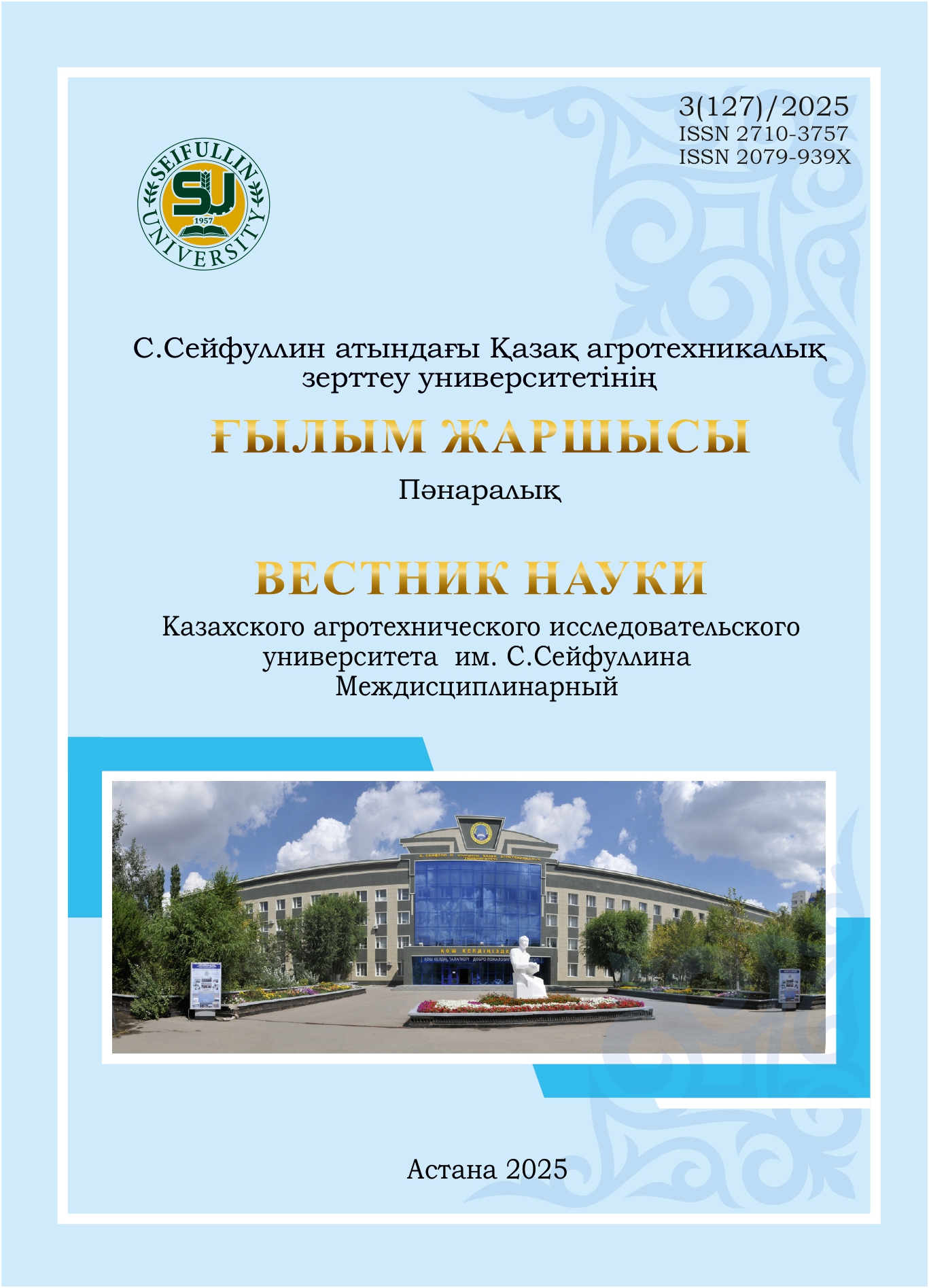Using irrigated multispecies pasture systems for sustainable horse grazing on degraded lands
DOI:
https://doi.org/10.51452/kazatu.2025.3(127).1944Keywords:
irrigated multicomponent pastures; forage capacity of pastures; multicycle pasture rotation; electric fence.Abstract
Background and Aim. In southern Kazakhstan, pasture degradation and limited natural forage threaten sustainable horse breeding. The development of irrigated multicomponent pastures presents a potential solution. This study aims to evaluate the effectiveness of such pastures and rotational grazing systems in restoring forage productivity on degraded lands.
Materials and Methods. Research was conducted on 192,5 ha of farmland in the Kazygurt district, with 60 ha allocated for irrigated multicomponent pastures. These were seeded with a mixture of alfalfa, melilot, and cereals and divided into four rotational grazing fields. Electric fencing was used to implement a multi-cycle grazing system. Field productivity, grazing duration, and feed availability were monitored from March to December.
Results. The new system doubled forage productivity, producing over 200,000 centners of feed, enough to sustain 70 horses during the grazing season. The approach also improved soil conditions and provided jobs for 25 local workers. The seasonal net income reached approximately 15 million tenge, supported by the production of fermented mare's milk (kumys and saumal) and improved livestock health.
Conclusion. Irrigated multicomponent pastures combined with controlled multicycle grazing can significantly increase forage availability and economic returns. This method supports ecological rehabilitation and offers a scalable model for sustainable pasture use in arid and semi-arid regions.

